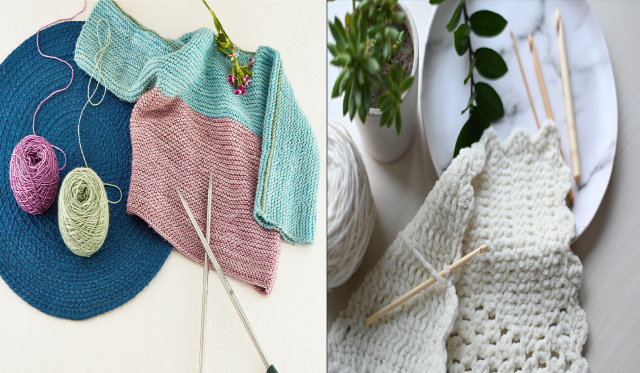
Is your handknit or crocheted project pilling? Don't let yourself get discouraged. It happens to all of us, and yes, it can be frustrating! After putting so much time and effort into knitting or crocheting, seeing those tiny, fuzzy balls pop up can feel disheartening. Your piece might look a bit worn after just a few wears, but don’t worry—there’s hope for keeping your work looking fresh. Whether you are working with wool yarn or blends, pilling can happen to any garment. The fuzzy problem can be seen in hand-dyed yarns and bulk machine-dyed yarns. However, proper knowledge can prevent it and keep your knitwear looking fresh and new. Let’s dive into the causes of pilling, how to avoid it, and the best care practices to maintain your knitwear.
What are the reasons/causes of pilling?
Before we start discussing the causes, why not talk about pilling? A pilling is also known as a bobble that you can see on the fabric. These occur when loose fibers on the fabric surface become entangled and form small, fuzzy balls. You will find these mostly underarms or along the sides of sweaters. You will be surprised to know that most fibers are prone to pills, but some are more prone to it. Soft yarns are delicate, finer, and more susceptible to pills.
Tips/tricks to avoid pills
- Selecting the suitable yarn to minimize pilling
As you are aware, the right yarn for your project is essential because the type and quality play a big role in deciding how your knitwear will react over time. We recommend opting for premium yarn over lower quality and loosely spun yarns. If you regularly wash your fabric, choose machine-washable yarn. This will help fibers stay in place and reduce pilling over time.
Sometimes the yarn weight is also responsible for pilling. Bulky yarns are more prone to the fuzz than lightweight yarns.
- Find the right balance in your yarn tension
The tension in your yarn also affects the pilling. Keep in mind that if the stitches are loose, they may likely rub against each other and cause friction that leads to pilling. However, if the stitches are too tight, the fabric becomes tight and causes wear and tear. It is important to have the right balance. It is better to start with the swatch to test the tension and adjust it accordingly.
- Wash your fabric gently
Do you follow the correct washing techniques? If so, it is the biggest culprit of pilling. Whether you are dealing with delicate extrafine merino wool yarn; merino-polyamide or merino-silk yarn blend, how you wash and take care of it makes a huge difference. For most yarn, handwashing in cold water with a gentle detergent is the safest option. Don’t wring or twist the fabric, otherwise, it may loosen the fabric and create pills. Avoid dryers that cause significant friction, which encourages pilling.
Viva’s DK weight yarn and Bella’s worsted weight yarn range is extrafine merino wool which is also machine-washable. Terra’s fingering weight is a merino-polyamide blend that is easy to care for as it can be machine-washed. Luna’s delicate merino-silk yarn requires hand washing in gentle detergent.
- Tools that shave off pills
Even if you take extra care of the fabric, some pilling may be unavoidable; these are those areas that have more friction. Don’t worry; there are some tools that are available and can remove the pills without damaging the fiber. One of the easiest ways is to use the sweater shaver that will gently remove the pills without affecting the rest of the fabric.
- Store knitwear properly
Most people overlook the storage of knitwear. However, it is one of the reasons for pilling. Improper storage leads to friction, especially when garments rub against each other. Some of the points you can consider:
- Avoid hanging because it will stretch the fiber and rub against the hanger. It is good to fold your sweaters and scarves and store them in a drawer.
- Place tissue paper between the folds to further reduce friction.
- It is essential to protect your wool knits from moths, so use lavender sachets or cedar blocks.
We hope the ideas discussed above help keep your fibers in good condition.
As you know pilling can be a frustrating problem, but if you use the right techniques, your knitwear looks fresh and new. From choosing high-quality yarn, following the right way of washing to wearing habits, there are many ways to prevent pilling.
For proper care for your knitwear choose premium yarns from the Symfonie range. Explore fingering, DK and worsted-weight yarns in more than 80 hand-dyed semisolid and variegated color options.
Summary: Are you feeling frustrated and upset due to pilling in fiber? Don’t worry; in this guide, we have discussed how you can avoid pilling, and what are the causes of it. Remember you can easily prevent it by following the technique mentioned above.
Take a look at the below articles before you buy yarn for your project:
Related articles:
How to Care for your Hand Dyed Yarn Projects
Yarn Care and Storage: Keep Your Precious Fibers Vibrant

